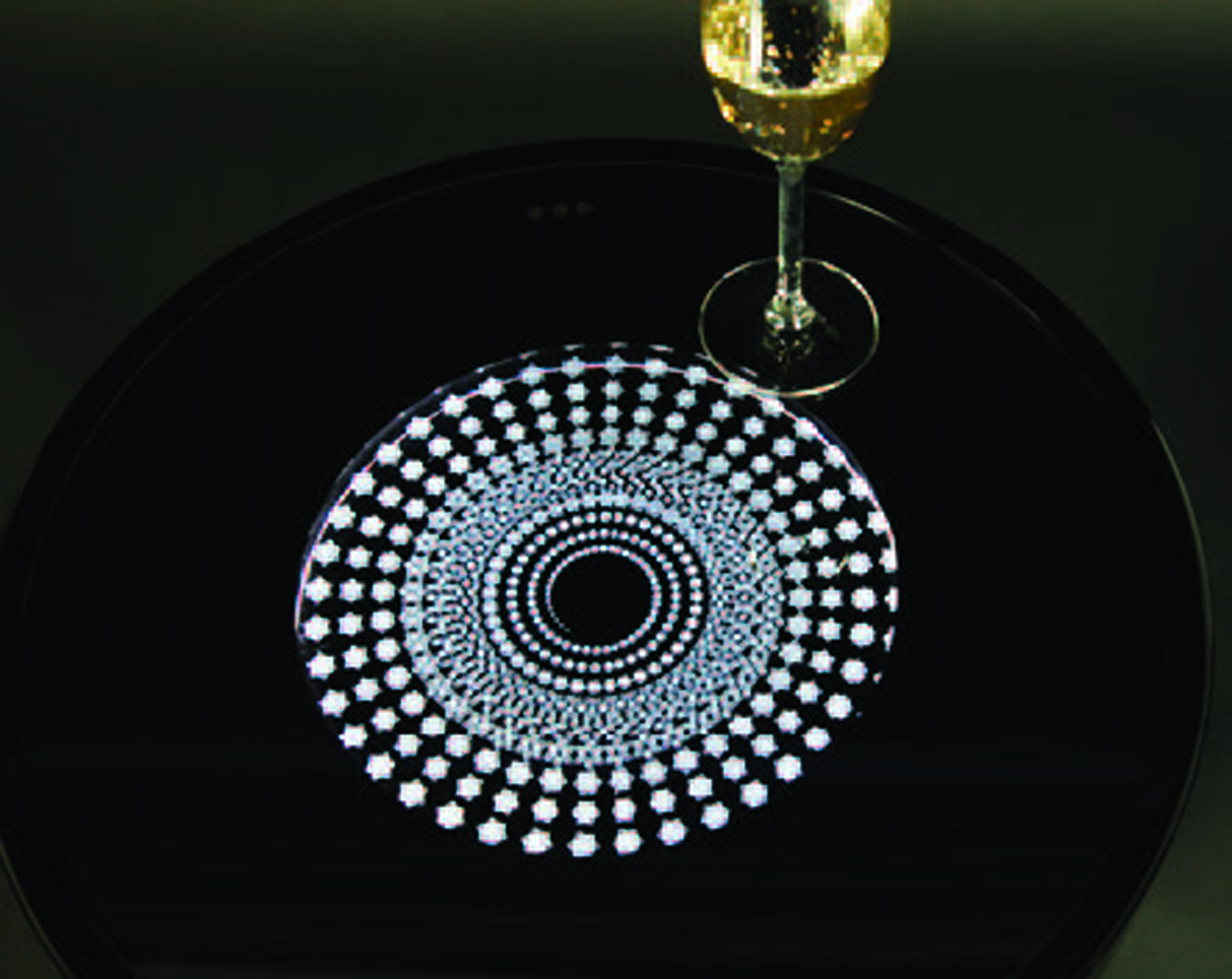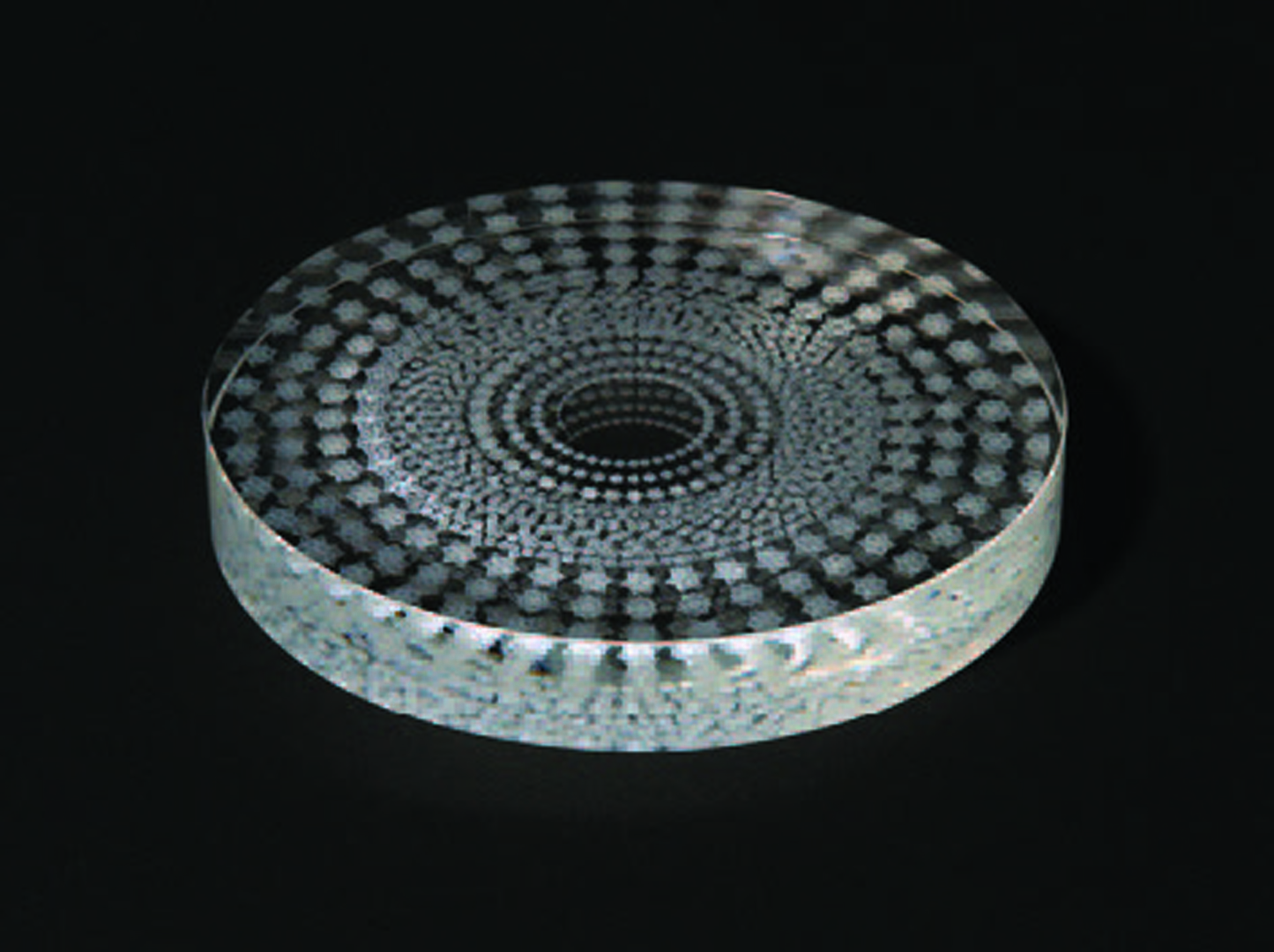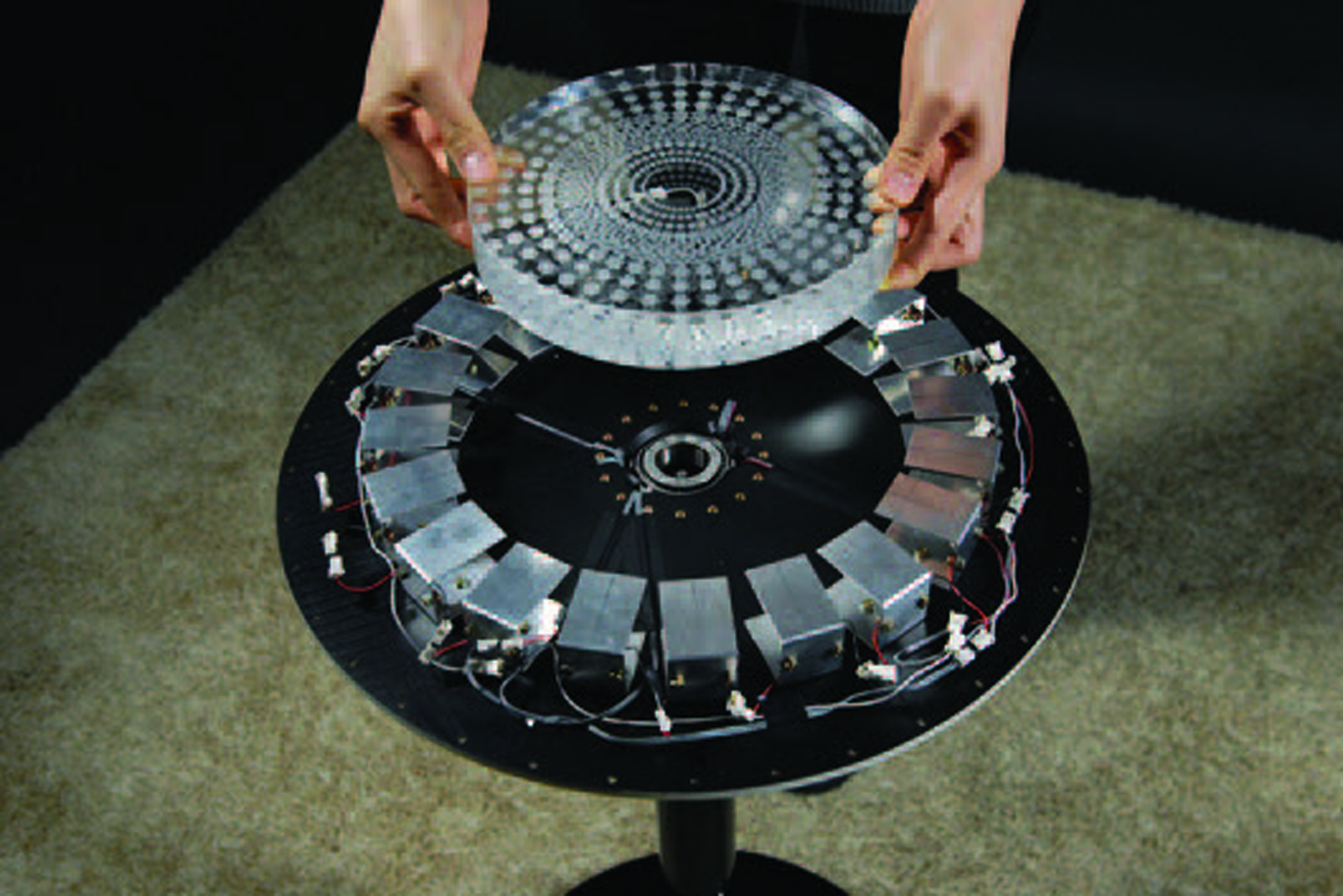“Crystal Zoetrope” by Lee and Seong
Conference:
- SIGGRAPH 2009
-
More from SIGGRAPH 2009:


Type(s):
Entry Number: 08
Title:
- Crystal Zoetrope
Presenter(s):
Description:
The modern zoetrope was invented by William Horner in the early 19th century. This simple device generates dynamic twodimensional (2D) animations, and was widely popular until the introduction of film in the early 20 century. Even today, this optical toy can be found for sale in stores and in use in art installations. The zoetrope has been improved to display threedimensional (3D) animations by several artists and companies, including Gregory Barsamian [1997], Stewart Dickson [2003], and Eric Dyer [2008]. The Ghibli museum displays a 3D zoetrope in the ‘Bouncing Totoro,’ and Pixar Animation Studios used one for ‘Toy Story’. The 3D zoetrope animation provides a feeling of realism that cannot be achieved through traditional 2D animations.
3D zoetropes generally consist of hundreds of physical animation objects. Each object must be located at a particular position in space by means of a support. Therefore, most 3D zoetropes have a complicated structure and tend to be bulky. Such zoetropes are fairly large, and usually serve as an artistic installation in amusement parks or museums. Viewers must keep a distance from these zoetropes to enjoy the animation.
What if a 3D zoetrope could be made small enough to be embedded in daily objects or the environment? Smaller, 3D zoetrope animations in a table, wall, or floor would allow the infusion of unique visual entertainment into everyday contexts.
Other Information:
References
Barsamian, G. 1997. Juggler, ICC collection.
Dyer, E. 2008. Bellows: bringing digital animation into the physical world. In ACM SIGGRAPH 2008 New Tech Demos (Los Angeles, California, August 11 – 15, 2008). SIGGRAPH ’08. ACM, New York, NY, 1-1.
Dickson, S. 2003. Technical Statement: A Three-Dimensional Zoetrope of the Calabi-Yau Cross-Section in CP4, LEONARDO, the Journal of the ISAST (International Society of Arts, Science and Technology), Volume 36, Issue 3.
Additional Images:






